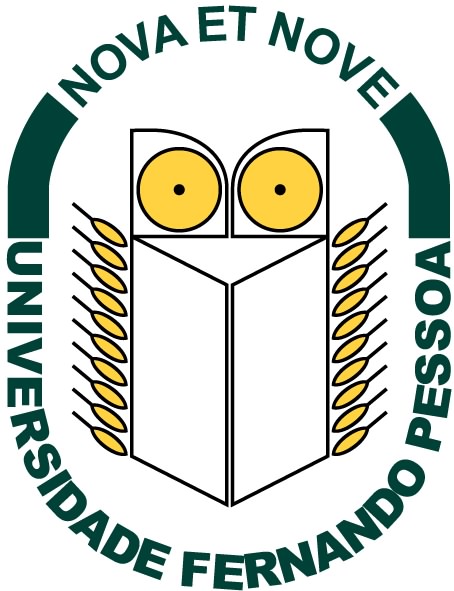
Universidade Fernando Pessoa
Porto, Portugal


Plate 1- The Cornucopia was the HORN OF PLENTY in Greek mythology. It was given by Zeus to Amalthea, daughter of the KING OF CRETE. She was an early cross-dresser, who appeared sometimes as a fetching NYMPH and sometimes as a SHE-GOAT. The Cornucopia has become a metaphor for anything DESIRABLE AND BOUNTIFUL pouring out. In terms of hydrocarbon potential, that means structural traps of different ages, convergent migration, large drainage, and favorable migration times in relation to trap formation. This seems a fitting description for both the wealth of deep-water seismic now pouring out and the beautiful contractional structures discovered in offshore Angola as well as in other offshore areas:(i) Gulf of Mexico, (ii) Offshore Orange, (iii) Offshore Pelotas, (iv) Offshore East Canada, (v) Offshore Morocco, (vi) Offshore Trinidad, etc., etc..
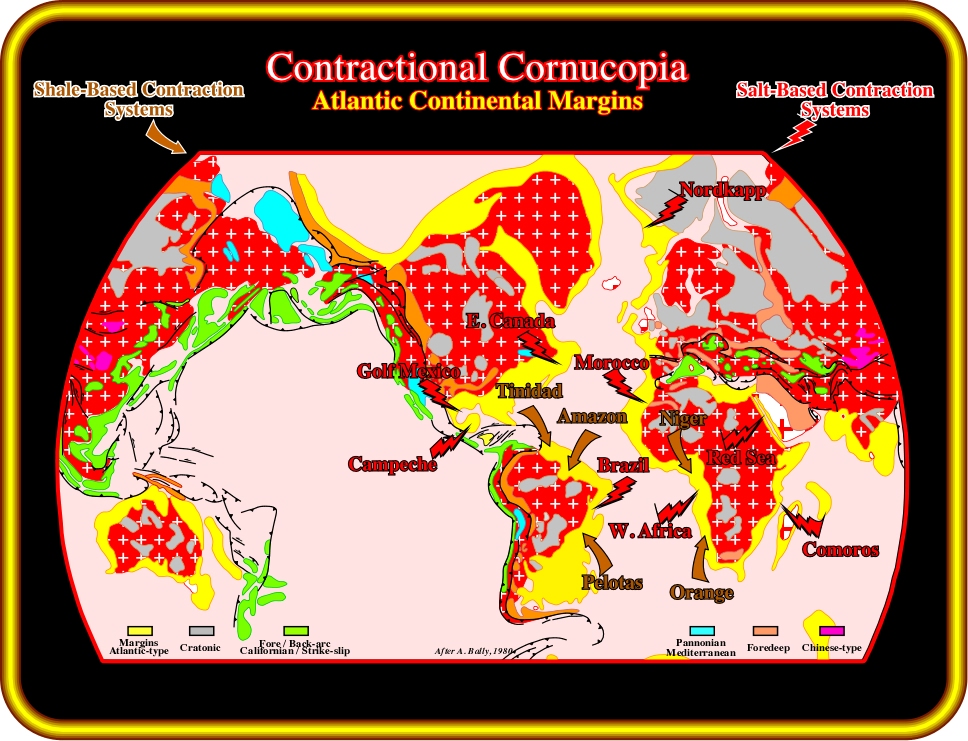
Plate 2- Ceno-Mesozoic passive margins in yellow areas show a veritable cornucopia of contractional systems. However, there are two different genetic groups of contractional structures: (i) Salt-based contractional systems, as in offshore- Nordkapp, - East Canada, - Morocco, - West Africa, - Red Sea,- Comoros, - Gulf of Mexico, - Campeche, etc.. (ii) Shale based-contractional systems, as in offshore- Trinidad, - Amazon, - Niger, - Pelotas, - Orange, etc..
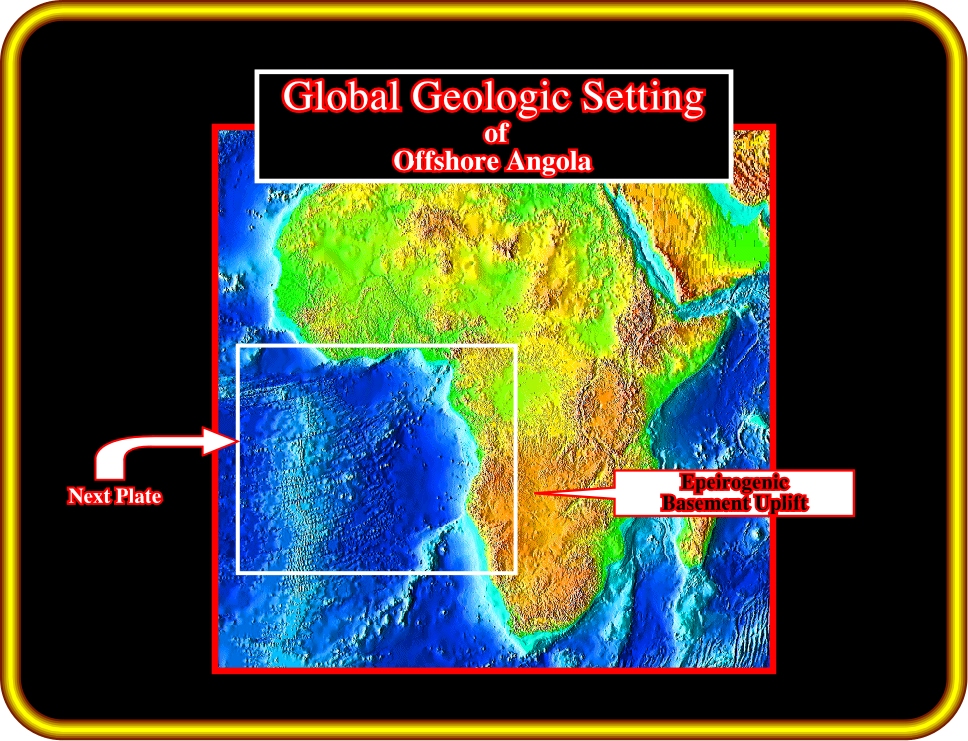
Plate 3- In this talk, we will concentrate on offshore Angola, which is located on the West margin of Africa. The first thing to note on this slide is the important epeirogenic uplift of the southern part of this continent. Secondly, as shown in detail in next slide, note the oceanic mountains represented by the Mid-Atlantic Ridge, the Walvis Ridge and the Cameroon hotspot trails. Examples shown in the talk are taken from the area between these hotspot trails and the mid-oceanic ridge.
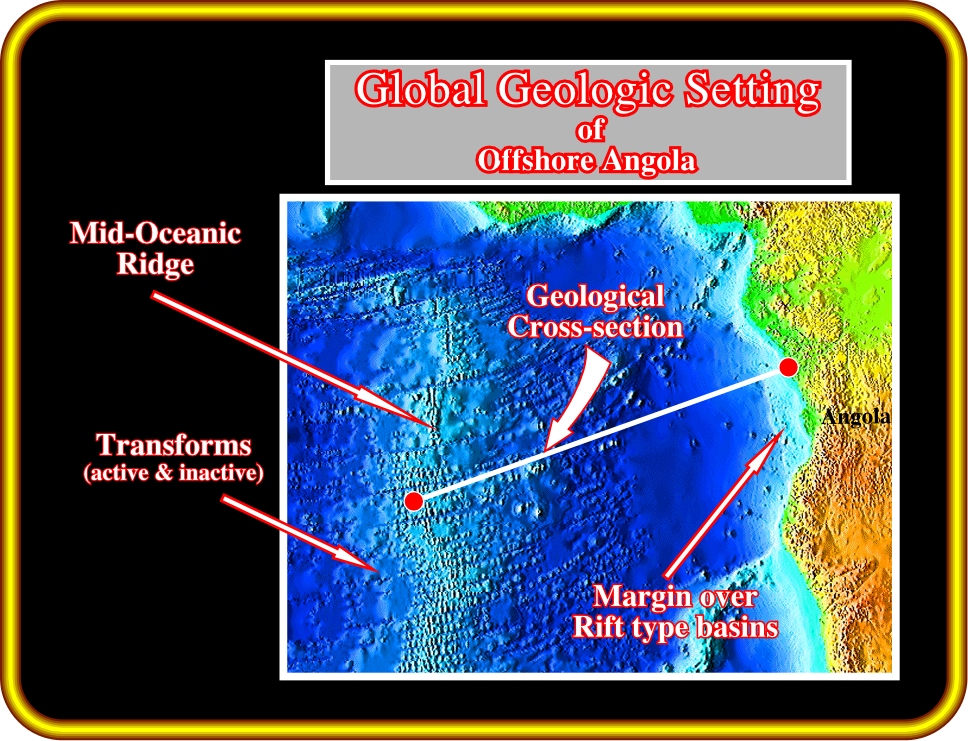
Plate 4- Here, the Mid-Atlantic Ridge is clearly visible, as well as the transform faults with active and inactive sections. In addition, it is important to notice several opposite displacements of the segments of the Mid-Atlantic ridge which result from different rates of sea floor spreading each side of the transform faults. The continental crust of offshore Angola formed by the superposition of different types of basins, i. e.: a) Pan-African fold belt on a Precambrian basement, b) Paleozoic Karoo-equivalent (Cambambe formation) basin, c) Upper Jurassic /Lower Cretaceous type-rift basins, and d) Meso-Cenozoic divergent margin. This can be illustrated by a schematic geological cross-section as depicted in the next plate.
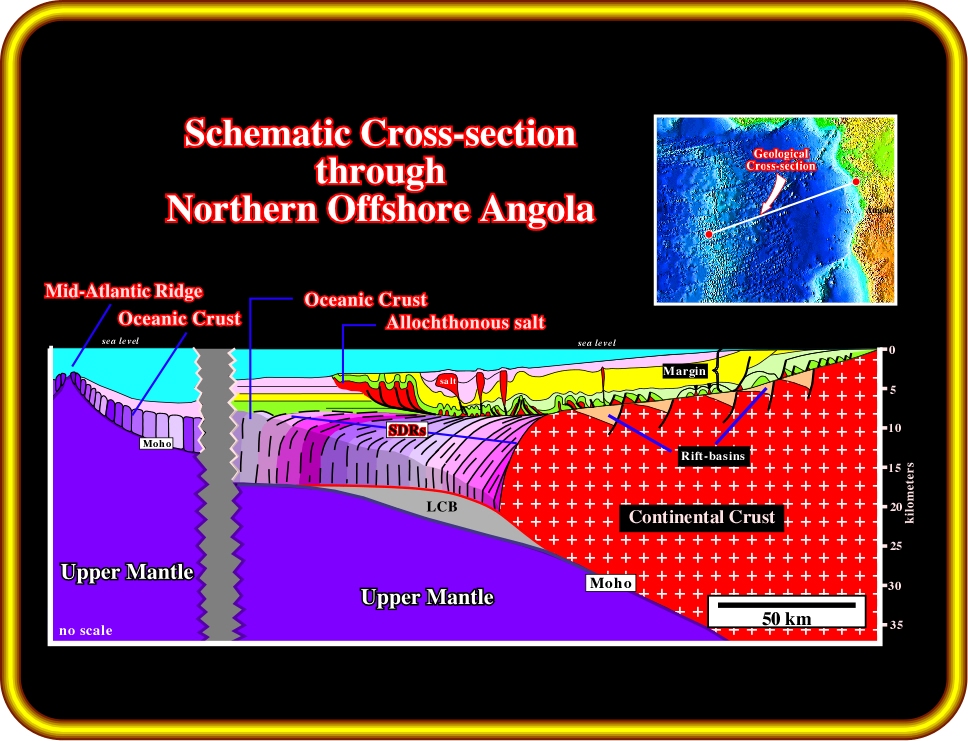
Plate 5- The continental crust shown here includes the Precambrian fold belt and the Paleozoic basins. Overlying this basement are: 1) The rift-type basins, 2) Sub-aerial flood basalts forming seaward-dipping reflectors (SDRs) which formed during initial stages of sea floor spreading, 3) Oceanic crust formed by submarine accretion, 4) The post-Pangea divergent margin evolved through two major tectonic-sedimentary phases: 4.1- Transgressive phase ending in mid Turonian ( 91.5 Ma) and 4.2- Regressive phase, which continues today. The transgressive phase comprises shallow water sediments, mainly sands and Aptian evaporites, which provide strong tectonic disharmony. Transgression continued to form a backstepping carbonate platform, whose growth was promoted by greenhouse conditions created by a combination of sub-aerial volcanism and sea floor spreading. The regressive phase is mainly represented by deep-water sediments. The shallow-water sediments were eroded during epeirogenic uplift.
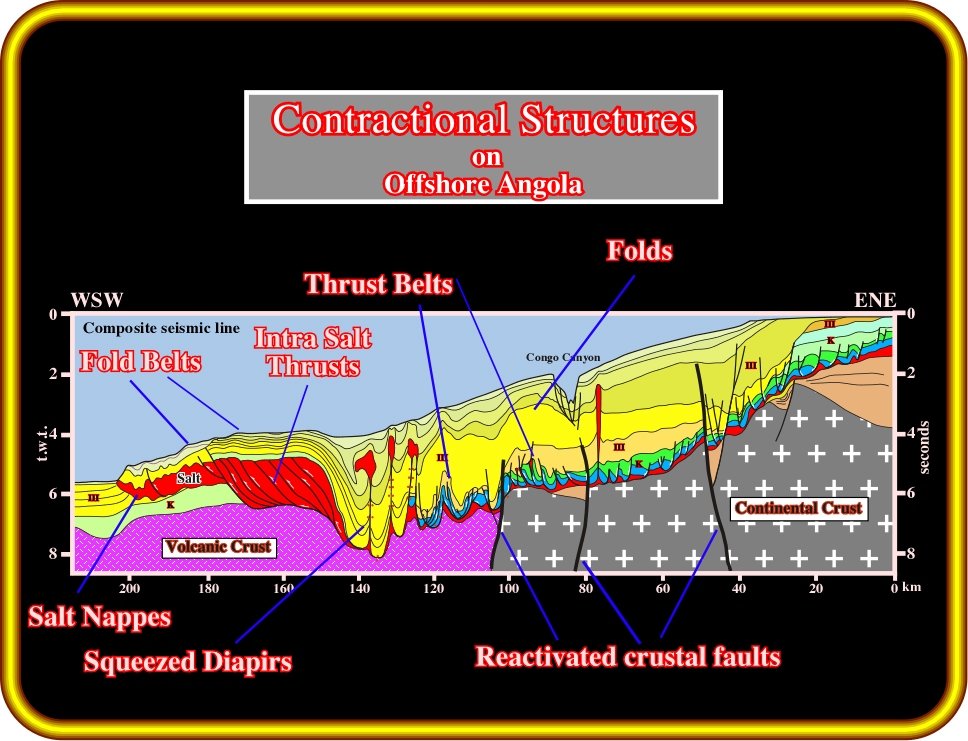
Plate 6- The previous schematic cross-section was constructed from this interpretation of a composite seismic line. Several deformation styles are evident, including a variety of contractional structures which we group into seven types: (i)- Fold Belts, (ii) - Salt Nappes, (iii) - Thrust belts, (iv) - Intra-salt thrusts, (v) - Squeezed salt diapirs, (vi) - Long-wavelength folds, (vii) - Reactivated crustal faults and associated folds.
to continue press
next
Send E-mail to carloscramez@gmail.com with questions or comments about this conference.
Copyright © 2006 CCramez
Last modification:
August, 2014